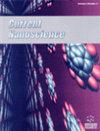Pharmacological Potential of Argan Oil (Argania spinosa) with a Special Focus on its Chemical Composition and Nanoformulations-based Applications
IF 1.5
4区 材料科学
Q4 BIOTECHNOLOGY & APPLIED MICROBIOLOGY
引用次数: 0
Abstract
: Argan oil is a rich source of bioactive chemicals with potential health advantages and is derived from the kernels of the Argania spinosa tree. Since ancient times, argan oil has been used as a natural cure in traditional medicine. Traditional uses of argan oil include cooking, massaging, healing, and curing skin, nails, and hair ailments. Due to the high concentration of monoand polyunsaturated fatty acids, antioxidants, polyphenols, and tocopherols, numerous industries are interested in using them in their top-selling products. Studies have evaluated argan oil's exceptional qualities, which include restoring the skin's water-lipid layer, increasing nutrients in skin cells, stimulating intracellular oxygen, neutralizing free radicals, regulating lipid metabolism, lowering blood pressure, and reducing inflammatory indicators. Utilizing argan oil in diet will help to fight ailments like cancer, diabetes, and cardiovascular conditions. In this article, we reviewed the published literature to delineate argan oil's chemical composition, extraction procedures, and pharmacological potential. Furthermore, we also explored the health-beneficial properties of argan oil-based nano-formulations with evidence to prove their effectiveness against various diseases. Underlying argan oil's rich composition and beneficial effects, exploring its favorable qualities and the mechanisms underlying its curative activity will require extensive research.摩洛哥坚果油(Argania spinosa)的药理潜力,特别关注其化学成分和基于纳米制剂的应用
:摩洛哥坚果油含有丰富的生物活性化学物质,具有潜在的保健功效,是从刺阿干树的果核中提取的。自古以来,摩洛哥坚果油一直被用作传统医学中的天然疗法。摩洛哥坚果油的传统用途包括烹饪、按摩、治疗和治愈皮肤、指甲和头发疾病。由于摩洛哥坚果油含有高浓度的单不饱和和多不饱和脂肪酸、抗氧化剂、多酚和生育酚,许多行业都有意将其用于畅销产品中。研究评估了摩洛哥坚果油的卓越品质,其中包括恢复皮肤的水脂层、增加皮肤细胞中的营养物质、刺激细胞内的氧气、中和自由基、调节脂质代谢、降低血压和减少炎症指标。在饮食中使用摩洛哥坚果油有助于对抗癌症、糖尿病和心血管疾病等疾病。在本文中,我们回顾了已发表的文献,对摩洛哥坚果油的化学成分、提取程序和药理潜力进行了描述。此外,我们还探讨了摩洛哥坚果油纳米制剂的保健特性,并有证据证明其对各种疾病的疗效。摩洛哥坚果油具有丰富的成分和有益的功效,要探索其有利品质及其治疗活性的内在机制,还需要进行广泛的研究。
本文章由计算机程序翻译,如有差异,请以英文原文为准。
求助全文
约1分钟内获得全文
求助全文
来源期刊

Current Nanoscience
工程技术-材料科学:综合
CiteScore
3.50
自引率
6.70%
发文量
83
审稿时长
4.4 months
期刊介绍:
Current Nanoscience publishes (a) Authoritative/Mini Reviews, and (b) Original Research and Highlights written by experts covering the most recent advances in nanoscience and nanotechnology. All aspects of the field are represented including nano-structures, nano-bubbles, nano-droplets and nanofluids. Applications of nanoscience in physics, material science, chemistry, synthesis, environmental science, electronics, biomedical nanotechnology, biomedical engineering, biotechnology, medicine and pharmaceuticals are also covered. The journal is essential to all researches involved in nanoscience and its applied and fundamental areas of science, chemistry, physics, material science, engineering and medicine.
Current Nanoscience also welcomes submissions on the following topics of Nanoscience and Nanotechnology:
Nanoelectronics and photonics
Advanced Nanomaterials
Nanofabrication and measurement
Nanobiotechnology and nanomedicine
Nanotechnology for energy
Sensors and actuator
Computational nanoscience and technology.
 求助内容:
求助内容: 应助结果提醒方式:
应助结果提醒方式:


